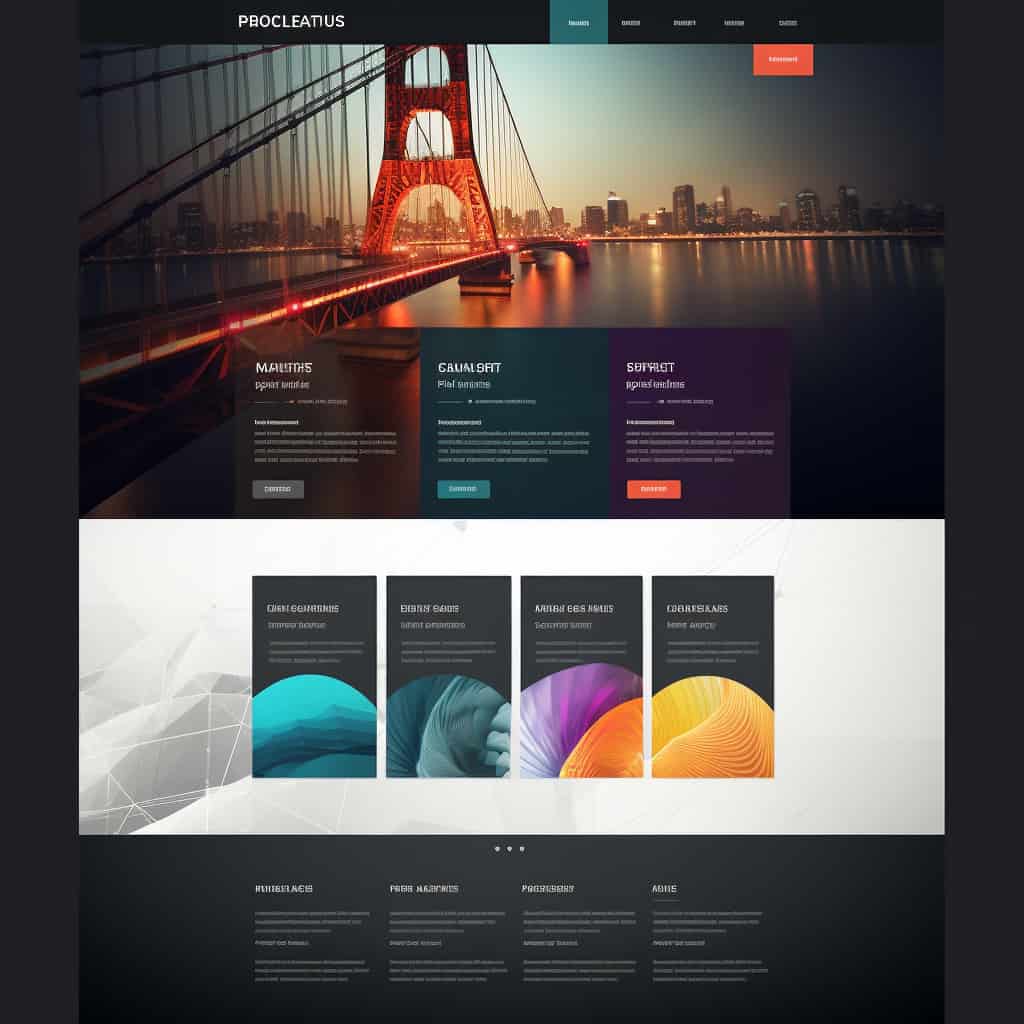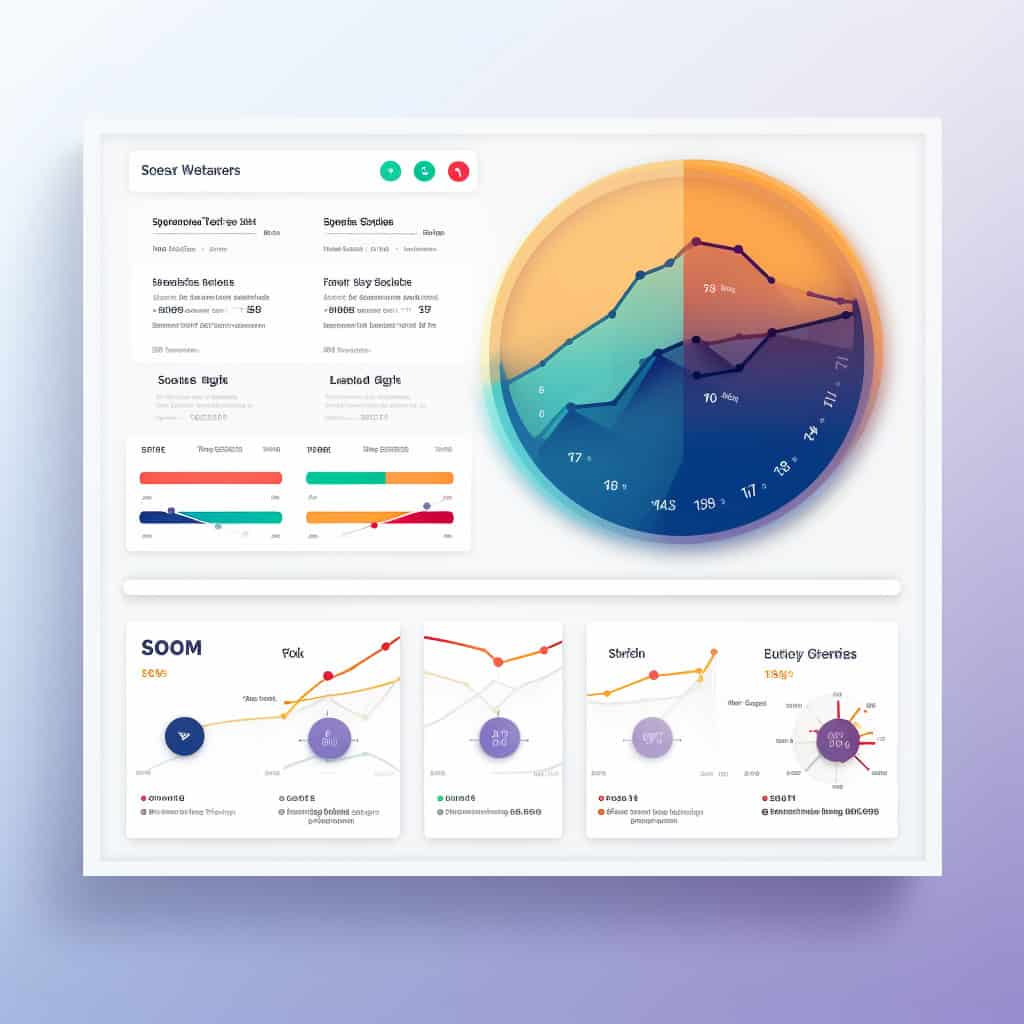How To Manage A Web Design Project
How To Manage A Web Design Project ; A Comprehensive Guide
Welcome to our comprehensive guide on “How to Manage a Web Design Project.” Whether you’re a seasoned web designer, a project manager looking to delve into the world of web design, or a business owner embarking on a website redesign, this article will provide you with invaluable insights, practical tips, and a step-by-step framework to successfully navigate the complex landscape of web design project management.
In today’s digital age, a strong online presence is essential for businesses and individuals alike. A well-designed website not only serves as a virtual storefront but also acts as a powerful tool to engage, inform, and captivate visitors. However, the process of creating an effective website involves much more than just aesthetics. It requires meticulous planning, careful coordination, and strategic management to ensure that the end product aligns with the client’s vision, user expectations, and industry standards.
In the digital realm, where technologies and trends evolve rapidly, managing a web design project demands a dynamic approach that balances creativity, functionality, and technical feasibility. From defining project goals and assembling the right team to wireframing, prototyping, testing, and deployment, every phase of the web design process requires a strategic approach and efficient management.
Key topics we will cover in How to manage a web design project” include:
- Setting the Foundation: Understand the importance of project scope, objectives, and stakeholder expectations. Learn how to conduct thorough research to gather requirements, define target audience personas, and outline the project’s goals.
- Crafting a Solid Plan: Dive into the planning phase, where you’ll learn about creating a project timeline, allocating resources, and setting milestones. Discover the significance of creating a detailed sitemap and user flow to ensure a seamless user experience.
- Designing for Success: Explore the world of web design aesthetics, from selecting colour palettes and typography to creating engaging layouts and visuals. Learn about the principles of responsive design to ensure your website looks and functions flawlessly across devices.
- Development Demystified: Gain insights into the technical aspects of web development, including selecting the right programming languages, content management systems (CMS), and frameworks. Understand the significance of collaboration between designers and developers for a smooth development process.
- Testing and Iteration: Discover the critical role of testing in web design. Learn about usability testing, browser compatibility testing, and responsive testing to identify and rectify any issues before launch.
- Launching and Beyond: Delve into the final stages of deployment and launch. Understand the importance of ongoing maintenance, security updates, and performance optimisation to ensure your website continues to deliver an exceptional user experience.
- Effective Communication and Collaboration: Throughout the article, we will emphasise the significance of clear communication and seamless collaboration among team members, clients, and stakeholders. Learn how to manage expectations, provide regular updates, and handle feedback constructively.
By the end of this article, you’ll be equipped with a comprehensive understanding of the web design project management process, enabling you to tackle projects with confidence, deliver exceptional results, and exceed client expectations. So, whether you’re a designer, a project manager, or a business owner, let’s embark on this journey to master the art of managing web design projects.
1: Setting the Foundation: Unveiling the Crucial Elements of Project Success
In the realm of project management, the journey from ideation to completion is laden with challenges and uncertainties. Yet, successful projects share a common trait: a solid foundation. The cornerstones of this foundation include a well-defined project scope, clear objectives, and aligned stakeholder expectations. However, these components don’t materialise out of thin air – they require meticulous research and planning.
Understanding the Pillars: Scope, Objectives, and Stakeholders
1. Project Scope: Defining the Boundaries of Success
The project scope serves as a compass that guides the project team throughout its lifecycle. It defines the boundaries of the project, encompassing what’s included and, equally important, what’s not. A well-defined scope prevents scope creep – the often subtle expansion of project goals – that can lead to budget overruns and missed deadlines. It’s vital to consult stakeholders, team members, and subject matter experts to outline the scope accurately. This process involves identifying deliverables, constraints, and any potential risks that might affect the project’s success.
2. Clear Objectives: The North Star of Project Direction
Objectives crystallise the project’s purpose and provide a roadmap for success. SMART (Specific, Measurable, Achievable, Relevant, Time-bound) objectives ensure that the project team works toward well-defined goals. These objectives serve as benchmarks for progress and enable efficient resource allocation. For instance, instead of a vague objective like “increase website traffic,” a SMART objective would be “increase website traffic by 20% within six months through targeted SEO efforts.”
3. Stakeholder Expectations: Aligning Visions
Stakeholders, ranging from clients and end-users to project sponsors and regulatory bodies, bring diverse perspectives to the project. Aligning their expectations with the project’s scope and objectives is crucial to avoid misunderstandings down the line. Regular communication with stakeholders helps maintain transparency, gather feedback, and make necessary adjustments to the project plan. Understanding their needs, concerns, and aspirations allows the project team to tailor their approach accordingly.
Mastering the Art of Research: Requirements, Personas, and Goals
1. Gathering Requirements: The Blueprint of Success
In-depth research forms the foundation of a project’s success. To gather requirements, engage with stakeholders to elicit their needs and expectations. This might involve surveys, interviews, or workshops to unearth crucial insights. These requirements become the blueprint that shapes the project’s features, functionalities, and user experiences. Be sure to document these requirements comprehensively, ensuring they align with the project scope and objectives.
2. Defining Target Audience Personas: Creating Human Connections
Projects often have end-users or consumers who will interact with the final product or service. Creating target audience personas brings these users to life, transforming them from abstract concepts into relatable individuals with unique needs and preferences. Personas serve as a touchstone throughout the project, enabling teams to make decisions that resonate with the intended audience. Crafting personas involves analysing demographics, behaviours, pain points, and motivations.
3. Outlining Project Goals: A Roadmap to Achievement
Project goals function as the beacon guiding the team toward the finish line. They articulate the desired outcomes in measurable terms. Thorough research informs the formulation of these goals, ensuring they align with both stakeholder expectations and the project’s broader objectives. Each goal should contribute to the project’s overarching purpose, and they should be dynamic, subject to adjustment as new insights emerge.
In the intricate landscape of project management, setting the right foundation is akin to laying a robust groundwork before constructing a magnificent edifice. Understanding the importance of project scope, objectives, and stakeholder expectations, coupled with the art of conducting thorough research, empowers project teams to navigate challenges with confidence and create outcomes that resonate with their intended audience. With this solid foundation in place, projects are better poised for success, fostering a culture of strategic planning, collaboration, and achievement.
2: Crafting a Solid Plan: Navigating the Crucial Planning Phase for Successful Project Execution
In the realm of project management, a solid plan serves as the bedrock upon which successful outcomes are built. The planning phase of any project is akin to plotting a course for a journey – it’s the meticulous preparation that sets the tone for a smooth and triumphant expedition.
The Foundation: Project Timeline
At the heart of any successful project lies a well-structured timeline. A project timeline is not merely a calendar of events; it’s a visual representation of how each task, milestone, and deliverable interconnects and progresses over time. A well-crafted timeline not only outlines the project’s trajectory but also aids in identifying potential bottlenecks and overlapping tasks.
When creating a project timeline, it’s essential to consider factors such as task dependencies, resource availability, and realistic time estimates. This phase requires collaboration and communication among team members to ensure a comprehensive understanding of the project’s scope and objectives. A solid project timeline serves as a roadmap that guides the project from inception to completion.
Allocating Resources for Efficiency
Resource allocation is a critical facet of project planning that directly impacts its success. Resources encompass not only financial investments but also human capital, technology, and other assets required to fulfil project requirements. Effective resource allocation demands a thorough understanding of the project’s requirements and constraints.
Balancing resource allocation involves distributing resources in a way that maximises efficiency and minimises waste. This entails assigning tasks to team members based on their expertise and availability, as well as procuring necessary tools and technology. A strategic allocation of resources enhances productivity and prevents potential roadblocks, contributing to the overall success of the project.
Milestones: Marking Progress and Achievements
Milestones serve as waypoints in the project journey, signifying significant achievements and progress. These markers provide a sense of accomplishment, inspire motivation, and help in tracking the project’s advancement. Setting meaningful milestones also enables the project team to gauge whether the project is on track or requires adjustments.
Milestones should be well-defined, achievable, and aligned with the project’s overarching goals. Each milestone should have a clear deliverable associated with it, making it easier to measure progress. Celebrating the completion of milestones fosters a sense of teamwork and encourages the team to stay focused and driven toward the project’s ultimate success.
User-Centric Design: Sitemap and User Flow
User experience (UX) plays a pivotal role in the success of projects, particularly those involving websites or applications. A detailed sitemap and user flow are indispensable tools for ensuring a seamless and intuitive user experience.
A sitemap is a visual representation of the website or application’s structure, outlining the hierarchy of pages and their relationships. It provides a bird’s-eye view of the user journey, helping to identify potential navigation challenges and content gaps.
User flow, on the other hand, delves into the granular details of how users interact with the system. It maps out the step-by-step path a user takes to accomplish specific tasks or goals within the project. This process highlights pain points, areas of confusion, and opportunities for optimisation, enabling designers and developers to create an interface that caters to users’ needs.
The planning phase is the keystone of project execution, shaping the trajectory and ultimate success of endeavours. Crafting a solid plan involves creating a project timeline that charts the course, allocating resources efficiently, setting meaningful milestones, and ensuring a seamless user experience through detailed sitemaps and user flows. By dedicating time and effort to meticulous planning, project managers and teams lay the foundation for a journey that is not only productive but also rewarding and successful.
3: Designing for Success: Navigating the Realm of Web Design Aesthetics
A visually appealing and user-friendly website is a fundamental cornerstone of online success. Web design aesthetics play a crucial role in capturing visitors’ attention, conveying brand identity, and facilitating a seamless user experience. From choosing the right colour palettes and typography to crafting captivating layouts and visuals, the art of web design is a harmonious blend of creativity and functionality. In this article, we’ll delve into the key components of web design aesthetics and the principles of responsive design that ensure your website shines across all devices.
The Power of Aesthetics in Web Design
In the virtual world, first impressions matter just as much as in the physical realm. The aesthetics of your website, encompassing its visual elements and overall design, profoundly influence user perceptions. Here’s how you can wield the power of aesthetics effectively:
1. Colour Palettes: Colours evoke emotions and convey messages. The choice of colour palette should align with your brand identity and the mood you want to evoke. Consistency in colour use throughout your website creates a cohesive and memorable visual experience.
2. Typography: Typography sets the tone for your content. Select fonts that are legible across devices and reflect your brand’s personality. A mix of font styles (such as serif and sans-serif) can add depth and hierarchy to your content.
3. Visuals: High-quality images, graphics, and videos engage visitors and provide visual context. Use visuals that are relevant to your content and resonate with your target audience.
4. Layouts: Intuitive and well-organised layouts guide users through your website. Implementing grid-based layouts and employing whitespace strategically can enhance readability and visual appeal.
5. Consistency: Consistency in design elements, such as navigation menus, buttons, and headers, fosters familiarity and ease of use. This consistency contributes to a polished and professional appearance.
Crafting Engaging and Functional Designs
Beyond individual design elements, crafting engaging layouts and visuals requires a holistic approach that considers the user journey and behaviour:
1. User-Cantered Design: Tailor your design to the needs and preferences of your target audience. Understand their goals and behaviours to create an experience that resonates with them.
2. Hierarchy and Visual Flow: Arrange content elements in a hierarchical order, guiding users’ attention from the most important to the least important. Visual cues such as size, colour, and placement can influence the flow of information.
3. Whitespace: Whitespace (also known as negative space) provides breathing room between elements, enhancing readability and visual clarity. It prevents a cluttered appearance and helps focus attention on key content.
4. Storytelling Through Design: Your website’s design should tell a cohesive story about your brand. Utilise visuals, animations, and interactive elements to narrate your brand’s journey and values.
Responsive Design: Bridging the Device Gap
In a world where browsing occurs on a wide range of devices, from smartphones to large desktop monitors, responsive design is paramount. This approach ensures that your website adapts gracefully to various screen sizes and orientations:
1. Fluid Grids: Implement fluid grids that automatically adjust content layout based on screen dimensions. This prevents content from appearing skewed or requiring excessive zooming.
2. Flexible Images: Use images that can scale without losing quality. This prevents images from being too large on smaller screens or too small on larger screens.
3. Media Queries: Media queries allow you to apply different styles based on the device’s characteristics. This enables tailoring the design for optimal user experience on different screen sizes.
4. Mobile-First Design: Designing for mobile devices first ensures that your website is optimised for smaller screens and then progressively enhanced for larger ones.
The world of web design aesthetics is a harmonious fusion of creativity and user-centric thinking. Selecting the right colour palettes, typography, visuals, and layouts can significantly impact how visitors perceive and interact with your website. Moreover, the principles of responsive design ensure that your digital masterpiece remains accessible and functional across an array of devices. By embracing these principles, you set the stage for a website that not only appeals visually but also cultivates a seamless and enjoyable user experience.
4: Development Demystified: Unveiling the Technical Aspects of Web Development and the Power of Collaboration
Web development has become a pivotal component of modern business strategies and online presence. Behind the seamless user experiences and visually appealing websites lies a complex and dynamic process that involves careful selection of technologies, languages, and collaborative efforts between designers and developers.
Choosing the Right Programming Languages: Laying the Foundation
Programming languages serve as the building blocks of web development. The choice of programming languages can significantly impact the performance, scalability, and maintainability of a website. Developers must consider factors such as the project’s scope, technical requirements, and their own expertise when selecting languages. Popular choices like JavaScript, Python, Ruby, and PHP offer diverse capabilities, enabling developers to craft dynamic and interactive websites. JavaScript, in particular, has emerged as an essential language for front-end development due to its versatility and compatibility with various frameworks.
Navigating the World of Content Management Systems (CMS)
Content Management Systems have revolutionised the way websites are built and maintained. CMS platforms like WordPress, Joomla, and Drupal empower non-technical users to manage and update their websites without delving into complex code. Choosing the right CMS depends on factors like the website’s purpose, scalability needs, and desired features. For instance, WordPress excels in blogging for small-to-medium websites and ecommerce sites, while Drupal is favoured for more intricate, enterprise-level projects. The CMS landscape continues to evolve, offering specialised solutions tailored to specific industries and niches.
Collaboration Between Designers and Developers: A Synchronised Dance
In the realm of web development, the collaboration between designers and developers is not just desirable; it’s indispensable. Designers bring creativity and user-centric perspectives to the table, ensuring a visually appealing and intuitive user interface. Developers, on the other hand, translate these designs into functional and interactive websites, handling the technical implementation. Effective collaboration requires clear communication, mutual respect for each other’s expertise, and a willingness to iterate based on feedback. Bridging the gap between design and development enhances the overall quality of the final product and leads to a smoother development process.
Web development stands as a fusion of artistic vision and technical expertise, where programming languages, content management systems, and frameworks converge to create digital experiences that captivate users. As the digital landscape continues to evolve, the key to success lies in making informed choices about the tools and technologies that best align with the project’s objectives. Moreover, recognising the symbiotic relationship between designers and developers, and fostering a culture of collaboration, is pivotal for delivering exceptional websites that seamlessly marry form and function. In a world where the online presence is often the first point of contact between businesses and customers, mastering the art of development is no longer a luxury, but a necessity.
5: Testing and Iteration: Discover the Critical Role of Testing in Web Design
A visually appealing layout, intuitive navigation, and seamless functionality are crucial for engaging visitors and driving conversions. However, achieving such a website requires more than just design skills; it requires rigorous testing and iteration.
Usability Testing: Putting Users at the Forefront
Usability testing is the practice of observing real users as they interact with a website to identify potential issues, uncover pain points, and gather insights on user behaviour. By watching users navigate through the site, designers can pinpoint areas where confusion arises, navigation becomes convoluted, or tasks are needlessly complex. This process is invaluable in ensuring that the website aligns with the expectations and needs of its target audience.
To conduct usability testing, designers often create scenarios or tasks for participants to complete while recording their interactions. The collected data helps designers understand how users perceive the website’s layout, content placement, and overall flow. This information guides iterative design improvements, ensuring that the user experience becomes progressively more intuitive and satisfying.
Browser Compatibility Testing: Bridging the Gap
The modern web is accessed through a myriad of browsers, each with its own rendering engine and quirks. Ensuring that your website looks and functions consistently across different browsers is the purpose of browser compatibility testing. Failing to address browser discrepancies can lead to a frustrating experience for users and deter them from engaging with the site.
During browser compatibility testing, designers scrutinise the website’s appearance and functionality across various browsers and their different versions. This process involves identifying visual inconsistencies, layout glitches, and functional breakdowns that can occur due to variations in rendering capabilities. By identifying and rectifying these issues, designers can guarantee a seamless user experience regardless of the browser a visitor chooses.
Responsive Testing: Adapting to All Devices
In the age of mobile dominance, a responsive design is non-negotiable. Responsive testing is the practice of assessing a website’s adaptability across different devices and screen sizes. A responsive website automatically adjusts its layout and content to ensure optimal visibility and usability on smartphones, tablets, laptops, and desktops.
Responsive testing involves physically testing the website on different devices or using responsive design tools to simulate various screen sizes. Designers pay close attention to elements like font sizes, image scaling, navigation menus, and touch interactions to ensure that the user experience remains consistent and comfortable across all platforms. A flawlessly responsive design boosts user engagement, supports SEO efforts, and enhances overall brand credibility.
The Iterative Process: Refining Through Testing
Testing in web design is not a one-time event but an iterative process. As designers gather feedback from usability testing, address browser compatibility issues, and fine-tune responsiveness, they continually refine and enhance the website’s design and functionality. This iterative approach acknowledges that the digital landscape is constantly evolving, and user needs may change over time.
The critical role of testing in web design cannot be overstated. Usability testing, browser compatibility testing, and responsive testing are essential practices that ensure a website’s success in the digital realm. By putting users at the forefront, bridging browser gaps, and adapting to various devices, designers create a polished, user-centric web experience that captivates visitors and drives business objectives. Embracing testing as a fundamental part of the design process sets the stage for a website that not only looks impressive but also delivers a superior user experience.
6: Launching and Beyond: Ensuring a Stellar Website Experience through Deployment and Maintenance
The journey from conceptualising a website to launching it is undoubtedly exciting and fulfilling. However, the process doesn’t end with the grand launch. In fact, the final stages of deployment and launch are just the beginning of a continuous cycle of improvement and maintenance that is essential for a website’s success in the long run.
The Final Stages: Deployment and Launch
The final stages of a website project are marked by deployment and launch, where the culmination of design, development, and testing come to life. This phase involves moving the website from a testing environment to a live server, making it accessible to the intended audience. Launching a website can be a moment of celebration, but it also comes with responsibilities that extend far beyond the initial release.
Ongoing Maintenance: The Key to Longevity
Maintenance is the cornerstone of a successful website. It involves a series of tasks aimed at keeping the website running smoothly, ensuring that all features are operational and addressing any issues that may arise. Ongoing maintenance includes content updates, bug fixes, and compatibility checks with evolving web technologies. Neglecting maintenance can result in broken features, security vulnerabilities, and an overall decline in user experience.
Regularly updating and maintaining the website’s content is crucial to keep users engaged. Fresh content not only retains visitors but also attracts new ones through improved search engine visibility. Blog posts, news updates, and multimedia content all contribute to the site’s vitality and relevance.
Security Updates: Safeguarding User Trust
In an era where cybersecurity threats are prevalent, ensuring the security of your website is paramount. Hackers are constantly seeking vulnerabilities to exploit, making security updates a crucial part of post-launch activities. Content management systems (CMS) and plugins should be regularly updated to patch potential security holes. Implementing security protocols such as SSL certificates and robust authentication mechanisms helps safeguard user data and build trust.
A security breach can have severe consequences, ranging from compromised user information to damaging the website’s reputation. By prioritising security updates, you not only protect your users but also maintain the credibility of your brand.
Performance Optimisation: Speed and Responsiveness Matter
Users have little patience for slow-loading websites. Page speed and responsiveness directly impact user satisfaction and search engine rankings. Therefore, optimising website performance should be an ongoing effort. Techniques like caching, image compression, and code minification can significantly improve loading times.
Regularly monitoring website performance using tools like Google PageSpeed Insights or GTmetrix can help identify bottlenecks and areas for improvement. Mobile responsiveness is equally crucial, as a significant portion of users access websites from various devices.
The journey of launching a website is not a linear path that ends with deployment; rather, it evolves into a cycle of continuous improvement and maintenance. Ongoing efforts in maintaining, securing, and optimising your website are vital to ensure a stellar user experience and meet the expectations of a tech-savvy audience.
As you navigate the final stages of deployment and launch, remember that the true test of a website’s success lies in its ability to adapt, evolve, and consistently deliver value to its users. By embracing maintenance, security updates, and performance optimisation as integral parts of your website strategy, you set the stage for a thriving online presence that stands the test of time.
7: Effective Communication and Collaboration: Key Pillars of Success
Success is often attributed not just to individual brilliance, but to the ability of teams to work together harmoniously towards shared goals. While technical expertise and innovative ideas are crucial, they can only reach their full potential when supported by effective communication and seamless collaboration.
Clear Communication: The Foundation of Understanding
At the heart of every successful project or endeavour lies clear communication. It’s not enough to have a vision; that vision must be conveyed comprehensively to everyone involved. Ambiguity can lead to misunderstandings, delays, and even project failures. By establishing a foundation of clear communication, team members can align their efforts, clients can understand progress, and stakeholders can feel confident in the project’s direction.
One of the essential aspects of clear communication is active listening. Each team member must feel heard and understood, fostering an environment of mutual respect and open dialogue. Regular team meetings, brainstorming sessions, and one-on-one discussions can all contribute to a culture where ideas flow freely and concerns are addressed promptly.
Seamless Collaboration: Leveraging Collective Strength
Collaboration is more than just working together; it’s about synergising individual strengths to achieve a collective goal. A diverse team with varied expertise can produce outstanding results, but only if they can collaborate effectively. This involves breaking down silos, promoting cross-functional interactions, and fostering an environment where everyone’s contributions are valued.
Modern collaboration tools and technologies have significantly eased the process of working together, especially when teams are geographically dispersed. Cloud-based platforms, project management software, and virtual communication tools enable real-time collaboration, document sharing, and instant feedback, making it possible to work together seamlessly regardless of physical location.
Managing Expectations: The Art of Delivering Reality
Misaligned expectations can be a major roadblock to project success. From the outset, it’s crucial to set clear and realistic expectations with clients and stakeholders. This involves transparently discussing project scope, timeline, potential challenges, and anticipated outcomes. By doing so, you lay the groundwork for a partnership built on trust and a shared understanding of what success looks like.
Regular check-ins throughout the project keep expectations in check and allow for any necessary adjustments. If unexpected obstacles arise, communicate them promptly, along with potential solutions. Honesty in addressing challenges builds credibility and reassures stakeholders that you’re actively managing the project’s progress.
Regular Updates: Building Confidence and Trust
Clients and stakeholders invest not only financially but emotionally in projects. Regular updates provide them with a sense of involvement and assurance that their interests are being prioritised. Timely reporting on milestones achieved, challenges encountered, and the overall project trajectory fosters transparency and keeps all parties engaged.
In addition to scheduled updates, be open to ad hoc communication when significant developments occur. These might include breakthroughs, setbacks, or changes in direction. Such proactive communication reinforces the idea that you’re invested in the project’s success and actively seeking input from all stakeholders.
Constructive Feedback: Nurturing Growth
Feedback is a two-way street that plays a vital role in refining both the project and team dynamics. Encourage a culture where feedback is seen as an opportunity for growth, rather than criticism. This requires providing feedback that is specific, actionable, and respectful, while also being open to receiving feedback from others.
Feedback sessions should be constructive and solutions-oriented. Address not only what needs improvement but also how those improvements can be made. This iterative process contributes to ongoing refinement and ensures that the project stays on course.
In the world of business and beyond, effective communication and seamless collaboration are the cornerstones of success. By prioritising clear communication, fostering collaborative environments, managing expectations, providing regular updates, and handling feedback constructively, teams can navigate challenges, harness the collective power of their members, and achieve remarkable outcomes. Whether it’s a complex project, a creative endeavour, or a critical business initiative, these principles will remain invaluable in creating a path towards excellence.
Exploring the Differences Between Managing the website project for a Shopify site compared to a WordPress site
In the realm of e-commerce website development, choosing the right platform can significantly impact the success and efficiency of your online store. Shopify and WooCommerce, both popular choices, offer distinct advantages and considerations when it comes to design and development. Understanding these differences is crucial for businesses looking to establish or revamp their online presence.
Shopify: Streamlined E-commerce Platform
Shopify is a comprehensive, hosted e-commerce platform known for its simplicity and user-friendly interface. One of its primary advantages is that it handles almost all aspects of website management, including hosting, security, and updates. For web designers, Shopify provides a structured environment with pre-designed templates and themes, making it relatively quick to set up and customise.
When managing a website design and build for a Shopify site, designers can leverage the platform’s intuitive drag-and-drop editor and extensive app store. This ecosystem allows for seamless integration of functionalities like payment gateways, inventory management, and marketing tools. Furthermore, Shopify’s robust customer support and dedicated e-commerce features cater specifically to online businesses, simplifying the development process.
WooCommerce: Flexible E-commerce Solution on WordPress
In contrast, WooCommerce operates as a plugin for WordPress, the widely-used content management system. This combination offers unparalleled flexibility and scalability for e-commerce websites. Designers working on WooCommerce sites have more control over customisation and can utilise the full capabilities of WordPress, including its vast library of plugins and themes.
Managing a website design and build for a WooCommerce site involves integrating the plugin with a WordPress installation. This approach grants designers the freedom to create unique layouts and functionalities tailored to the business’s needs. WooCommerce’s open-source nature allows for extensive customisation, making it ideal for businesses looking for a bespoke e-commerce solution.
Key Differences in How To Manage A Web Design Project in Shopify compared to WordPress
The choice between Shopify and WooCommerce often boils down to specific business requirements and design preferences. Shopify excels in providing a streamlined, all-in-one platform suitable for businesses seeking simplicity and ease of use. On the other hand, WooCommerce appeals to those who value customisation and want full control over their website’s design and functionality.
Designers managing Shopify websites will appreciate the platform’s user-friendly interface and integrated tools, ideal for rapid deployment and efficient management. In contrast, WooCommerce empowers designers with the flexibility to create unique, feature-rich online stores using the extensive resources of the WordPress ecosystem.
Managing a website design and build for a Shopify site versus a WooCommerce site presents distinct considerations for web designers and businesses alike. Shopify offers simplicity, security, and a curated ecosystem tailored for e-commerce, while WooCommerce provides flexibility, customisation, and the power of WordPress integration.
Ultimately, the choice between Shopify and WooCommerce depends on factors such as desired functionalities, scalability, and long-term business goals. By understanding these differences, businesses can make informed decisions when embarking on their e-commerce journey, ensuring the development of a successful and optimised online store.
Conclusion: How To Manage A Web Design Project
Mastering the art of managing a web design project is an essential skill that can greatly influence the success of your digital ventures. By adopting a well-structured and comprehensive approach, you can navigate the complexities of web design with confidence and efficiency. Remember that effective project management starts with clear communication, detailed planning, and a keen understanding of your client’s goals and expectations. Throughout the project lifecycle, maintaining open lines of communication, embracing flexibility, and addressing challenges promptly will help you stay on track and ensure the final product aligns with your client’s vision.
Furthermore, collaboration among team members, whether designers, developers, content creators, or stakeholders, is crucial for a harmonious workflow. Utilise project management tools and techniques to streamline processes, monitor progress, and ensure that tasks are completed within their designated timelines. Regular checkpoints and evaluations will allow you to identify areas for improvement and make necessary adjustments before issues escalate.
In the rapidly evolving landscape of web design, staying up-to-date with the latest trends, technologies, and user preferences is paramount. Incorporate user-centric design principles, responsiveness, and accessibility considerations into your projects to create digital experiences that resonate with your target audience.
Ultimately, the journey of managing a web design project involves a balance between creativity, organisation, and adaptability. By applying the insights and strategies outlined in this article, you can navigate the challenges and intricacies of web design project management successfully, leading to the delivery of remarkable websites that not only meet but exceed client expectations.














